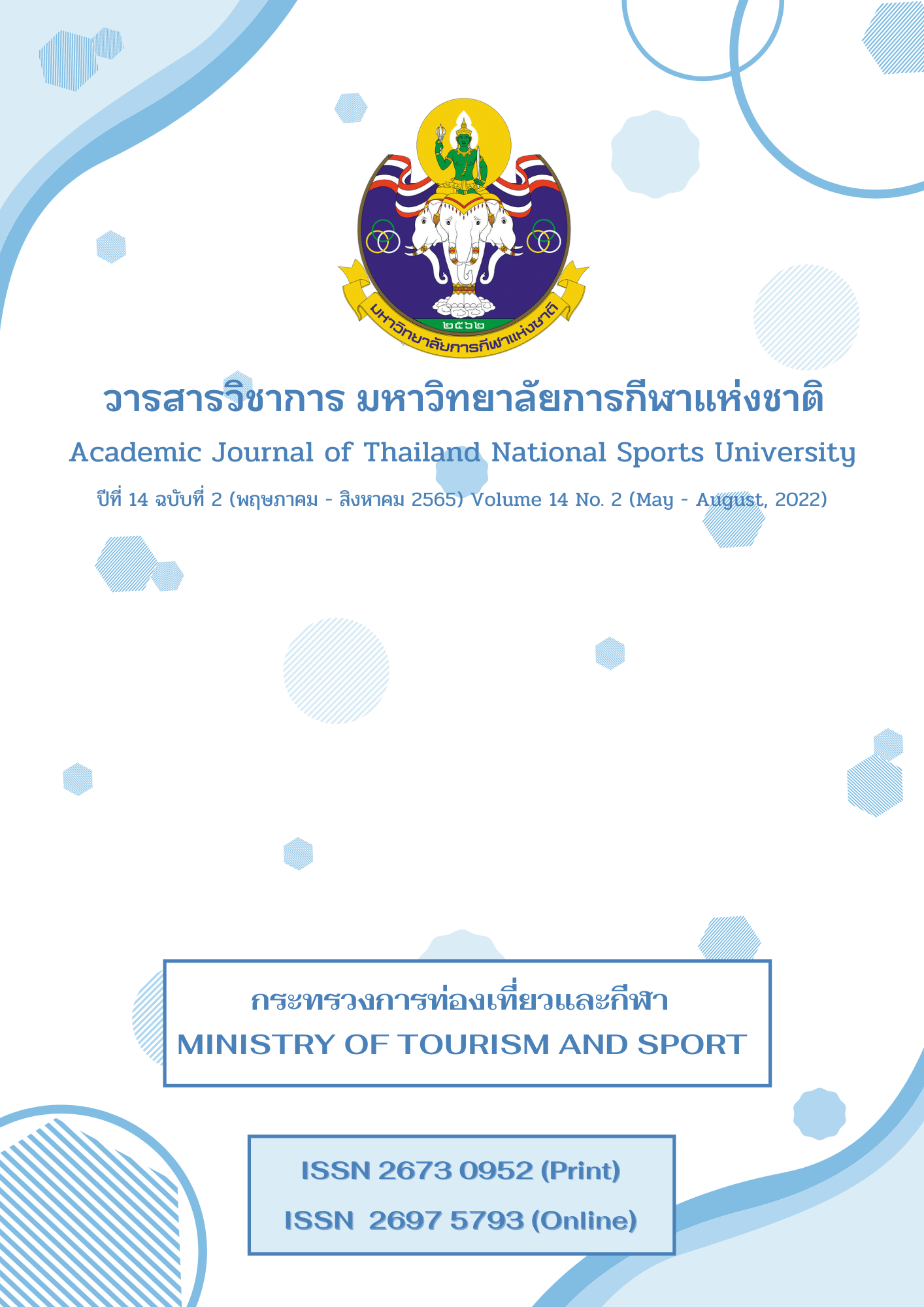ผลของโปรแกรมการฝึกที่มีต่อทักษะทางกลไกของเด็กออทิสติก
Main Article Content
บทคัดย่อ
การวิจัยในครั้งนี้มีวัตถุประสงค์เพื่อ ศึกษาและเปรียบเทียบผลของโปรแกรมการฝึกที่มีผลต่อทักษะ ทางกลไกของเด็กออทิสติก ระหว่างก่อนการฝึกและหลังการฝึก ประชากรที่ใช้ในการศึกษาครั้งนี้ ประกอบด้วย เด็กออทิสติก ซึ่งเป็นนักเรียนของศูนย์การศึกษาพิเศษเขตการศึกษา 4 จังหวัดตรัง อายุ 6 ปี จำนวน 14 คน เครื่องมือที่ใช้ในการวิจัย คือ แบบทดสอบการโยนบอลชนพินที่ผู้วิจัยสร้างขึ้นซึ่งได้หาความเที่ยงตรงเชิงเนื้อหาโดยใช้ค่าดัชนีความสอดคล้องระหว่างรายการทดสอบกับวัตถุประสงค์ของการวิจัย (Index of Item Objective Congruence: IOC) มีค่าความเที่ยงตรงเชิงเนื้อหา ดังกล่าวเท่ากับ 0.86 และมีความเชื่อถือได้จากสูตรสัมประสิทธิ์สหสัมพันธ์แบบเพียร์สันเท่ากับ 0.77 ใช้ระยะเวลาในการฝึก 8 สัปดาห์ ๆ ละ 4 วัน คือ วันจันทร์ วันอังคาร วันพุธ และวันพฤหัสบดี ทำการทดสอบก่อนเรียนในสัปดาห์ที่ 1 และทดสอบหลังการเรียนในสัปดาห์ที่ 8 สถิติที่ใช้ในการวิเคราะห์ข้อมูล ประกอบด้วย ค่าเฉลี่ย (Mean) ค่าส่วนเบี่ยงเบนมาตรฐาน (Standard deviation) และการทดสอบค่า“ที” (t - test) ผลการวิจัยพบว่า ทักษะทางกลไกของเด็กออทิสติกหลังการฝึกสูงกว่าก่อนการฝึกอย่างมีนัยสำคัญทางสถิติที่ระดับ. 05
Article Details

อนุญาตภายใต้เงื่อนไข Creative Commons Attribution-NonCommercial-NoDerivatives 4.0 International License.
บทความที่ได้รับการตีพิมพ์เป็นลิขสิทธิ์ของวารสารวิชาการ มหาวิทยาลัยการกีฬาแห่งชาติ ข้อความที่ปรากฏในบทความแต่ละเรื่องในวารสารวิชาการเล่มนี้ เป็นความคิดเห็นส่วนตัวของผู้เขียนแต่ละท่านไม่เกี่ยวข้องกับวารสารวิชาการมหาวิทยาลัยการกีฬาแห่งชาติ แต่อย่างใด ความรับผิดชอบองค์ประกอบทั้งหมดของบทความแต่ละเรื่องเป็นของผู้เขียนแต่ละท่าน หากมีความผิดพลาดใดๆ ผู้เขียนแต่ละท่านจะรับผิดชอบบทความของตนเองแต่ผู้เดียว
เอกสารอ้างอิง
Araya Boonthichak. (2009). The effect of Fitball training exercise upon flexibility, balancand muscular strength of Autistic children (Master’s thesis), Chulalongkon University.
Capio, C. M. et al. (2015). Fundamental movement skills training to promote physical activity in children with and without disability: A pilot study. Sport and Health Science, 4(3), 235 - 243.
Charoen Krabuanrat. (2014). Sports Coaching Science. Bangkok: Sittana copied.
Corbin, C. B., & McKenzie, T. L. (2008). Physical activity promotion: a responsibility for both k - 12 physical education and kinesiology. Journal of Physical Education, Recreation & Dance, 79(6), 47 - 56.
Daranee UthaiRattanakit. (2017). Open the world of knowledge of autistic children in Thai society. Retrieved from https://www.the101.world/daranee-interview
Department of Mental Health. (2003). Autism Spectrum Disorder Integrated car handbook Vol.2 (3rd ed.). Bangkok: The Teachers Council of Ladprao Printing House.
Holfelder, B., & Schott, N. (2014). Relationship of fundamental movement skills and physical activity in children and adolescents: A systematic review. Psychology of Sport and Exercise, 15(4), 382 – 391.
Jirakorn Siriprasert. (2000). Physical Education Teaching Skills and Techniques. Bangkok: Publisher of Chulalongkorn University.
Office of the Basic Education Commission. (2004). The method of learning and teaching quality development for child - centered learning. Bangkok: Office of the Basic Education Commission.
Penkae Limsila. (2001). Autism Research. Samut Prakan: Ch. SaengNgam Printing.
Rattanaporn Thitikornkowit. (2015). Gross muscles development in balancing acts using movement activities for autistic children in Central Special Education Center. Bangkok: Faculty of Education Ramkhamhaeng University.
Rovinelli, R. J., & Hambleton, R. K. (1977). On the use of content specialists in the assessment of criterion - referenced test in item validity. Dutch Journal of Educational Research, 2, 49 - 60.
Ruek Suwannachay. (2015). Motor fitness activities for autistic children. Retrieved from http://home.kku.ac.th/autistic/th/image/stories
Singer, R. N. (1976). Physical Education Foundation. New York: Holt Reinhart and Winston.
Surat Cheerapong. (2010). The effects of Basic movement exercises upon Autistic children's balancing (Master’s thesis), Chulalongkorn University.
Willgoose, C. L. E. (1961). Evaluation in health education and physical education. New York: McGraw – Hill Book.


